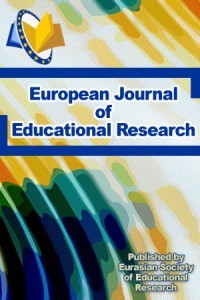From Text to Space: A Geographical Reading of Samed Behrengi
From Text to Space: A Geographical Reading of Samed Behrengi
Samed Behrengi, geographical reading space, story,
___
- Ayata-Senoz, C. (2005). Metin dilbilim ve Turkce [Textology and Turkish]. Istanbul, Turkey: Multilingual.
- Ertan, G. G. (2011). Samed-i Behrengi’nin hikayeciligi ve Iran cocuk edebiyatindaki yeri [Samed-i Behrengi's storytelling and its place in Iranian children's literature]. Selcuk University the Journal of Institute of Social Sciences, 26, 163-171.
- Erturk, M. (2013). Mekanin diyalojisi kent mekani- kent oznesi [Dialogue of space urban space- city subject] (Unpublished doctoral dissertation). Istanbul Bilgi University, Istanbul, Turkey.
- Esen, N. (2002). Ahmet Mithat'ta kronotop kavrami [Chronotope concept in Ahmet Mithat].Vesika-lik Journal, 137-139.
- Gurbuz, S., & Sahin, F. (2017). Sosyal bilimlerde arastirma yontemleri felsefe-yontem-analiz [Research methods in social sciences philosophy-method-analysis ]. Ankara, Turkey: Seckin.
- Guresir, S. K. (2015). Ihanetin mekanindan mucadele ve kurtulusun mekanina: Nazim Hikmet'in kuvayi milliye siirlerini cografya merkezli okuma denemesi [From the space of betrayal to the space of salvation and salvation: Nazim Hikmet's attempt to read kuvayi milliye poems based on geography]. Trakya University Journal of Faculty of Letters, 5(9), 133-143.
- Isik, E., & Senturk, Y. (2009). Ozneler, durumlar ve mekanlar- Toplum ve mekan: mekanla kurgulamak: [Subjects, situations and spaces- Society and space: fiction in space.]. Istanbul, Turkey: Baglam.
- Kacmaz, P., & Kacmaz, M. (2017). Edebiyat cografyasi; Elif Safak romanlarinda cografi unsurlar. [Geography of literature; geographical elements in the novels of Elif Safak]. Journal of Strategic Research in Social Science, 3(4), 1-20.
- Kantar, D. (2004). Tur uzerine kavramsal bir tanimlama denemesi [Towards a conceptual definition of genre]. Dil Dergisi [Language Journal], 123, 7-18. http://doi.org/10.1501/Dilder_0000000006
- Kefeli, E. (2009). Cografya merkezli okuma [Geography centered reading]. Electronic Turkish Studies, 4(1), 423-433.
- Olcer, E. (2003). Turkiye masallarinda toplumsal cinsiyet ve mekan iliskisi [Gender and relationship to place in Turkey tales] (Unpublished doctoral dissertation). Bilkent University, Ankara, Turkey.
- Somer, P. M. (2006). Mimarlik ve bilimkurgu edebiyatinda mekan okumalari [Space reading in architecture and sci-fi literature] (Unpublished master’s thesis). Istanbul Technical University, Istanbul, Turkey.
- Tumer, G. (1984). Insan-mekan iliskileri ve Kafka [Human-space relations and Kafka]. Izmir, Turkey: Sanat-Koop. Yazici, N. (2002). Halikarnas Balikcisi’nin eserlerinde tabiat [Nature in the works of Halikarnas Balikcisi]. Ankara, Turkey, Turk Tarih Kurumu.
- ISSN: 2165-8714
- Başlangıç: 2012
- Yayıncı: Eurasian Society of Educational Research
The Development of an Instrument to Measure the Higher Order Thinking Skill in Physics
Syahrul RAMADHAN, Djemari MARDAPİ, Zuhdan Kun PRASETYO, Heru Budi UTOMO
Investigating the Academic Motivations and Academic Achievements of Pre-Service Visual Arts Teachers
İryna ZVARYCH, Svitlana M. KALAUR, Nataliya M. PRYMACHENKO, İnna V. ROMASHCHENKO, Oksana İa. ROMANYSHYNA
Budget Plan to Manage Income and Expenses in College Students: Some Features that Explain It
Arturo GARCİA-SANTİLLAN, Teresa ZAMORA-LOBATO, Jesica J. RAMOS-HERNANDEZ
Interplay between Politics and Institution in Higher Education Reform
Technology-Supported Teaching: Technological Progress or a Sham?
Eyal ECKHAUS, Nitza DAVİDOVİTCH
Greek Teachers’ Perceptions about the Types and the Consequences of Conflicts within School Context
